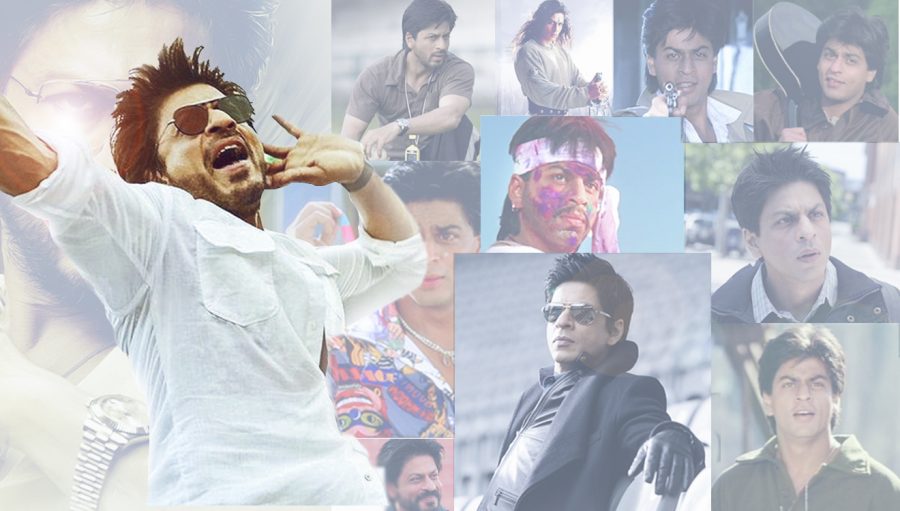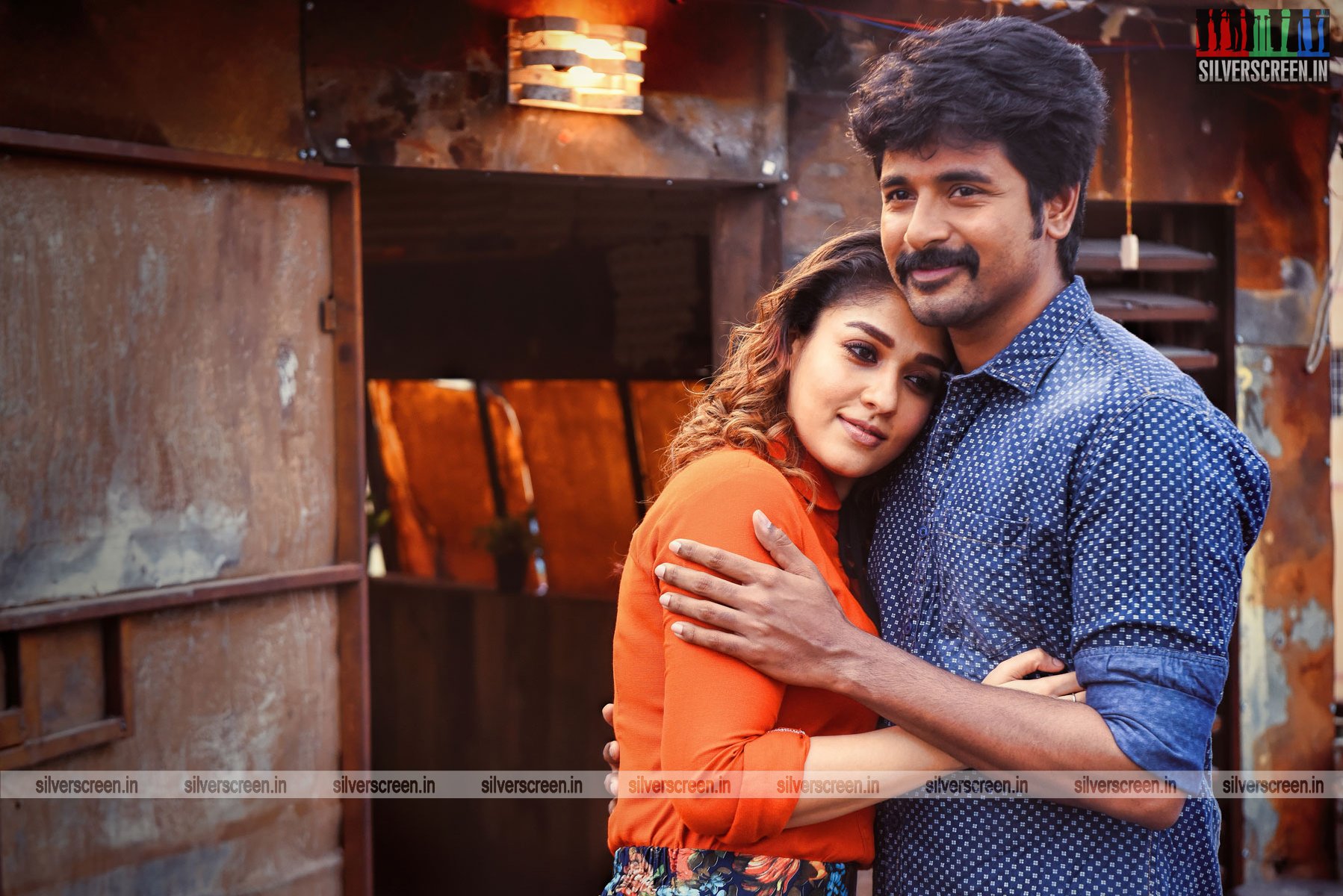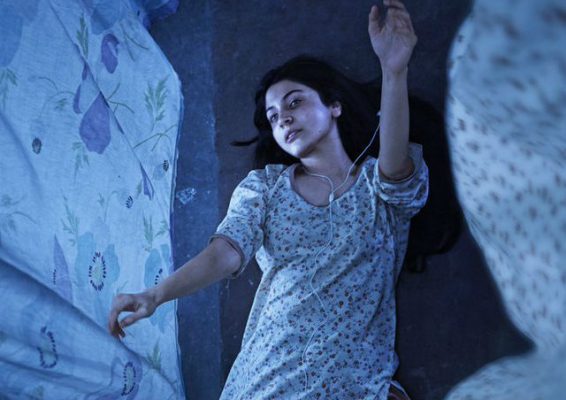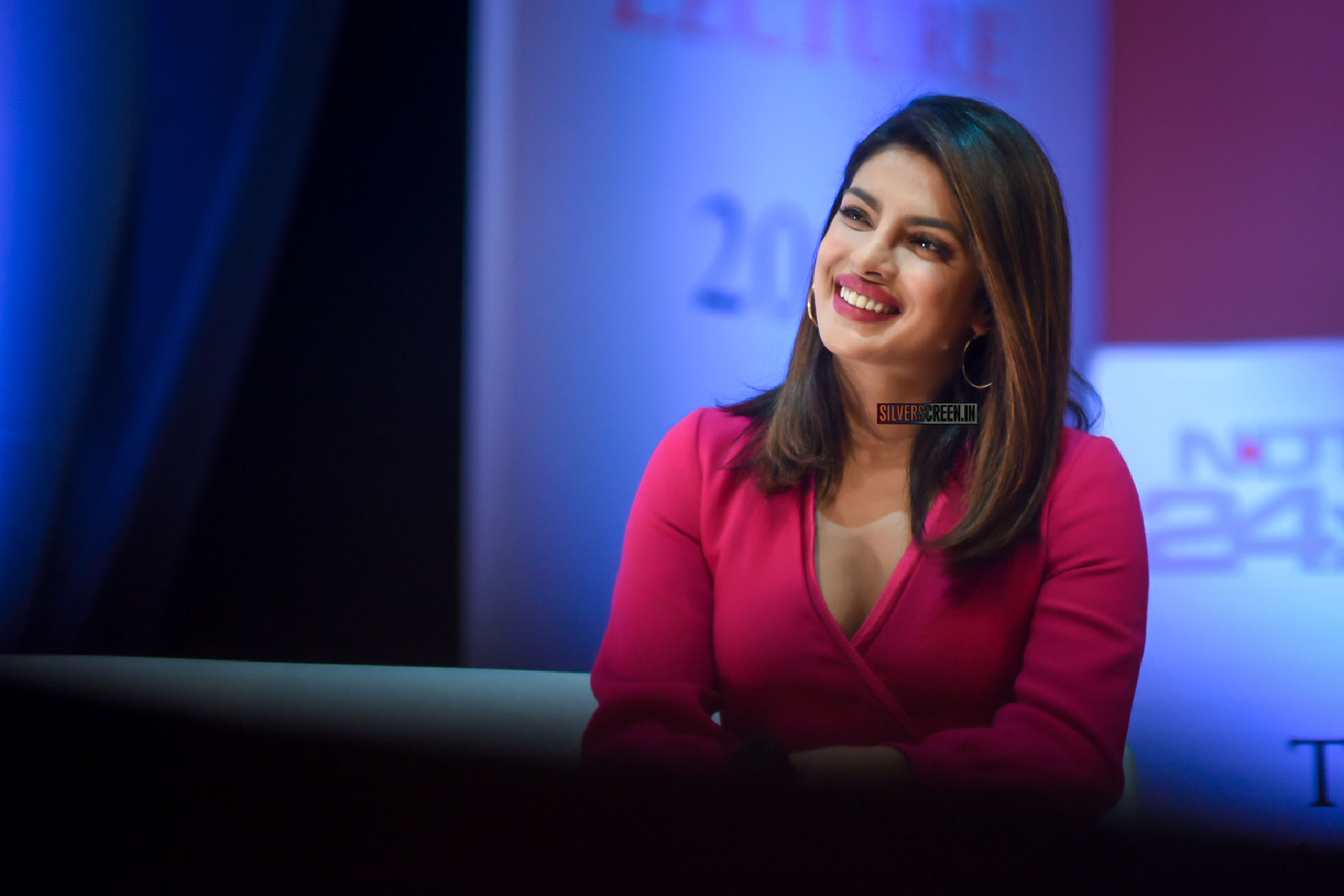It all began when he played Raja to Divya Bharathi’s Kajal in Deewana (1992). Love-struck and still a gentleman, who even goes on to sever ties with his scheming father, Raja exuded intensity and a goofy charm, making even the widowed and depressed Kajal fall in love with him.
Shah Rukh Khan won the Filmfare for Best Debut that year, despite being an industry outsider. His critics proclaimed that he doesn’t have the looks of a hero, but there was no stopping King Khan. With his intense gaze and arms wide open, he became Bollywood’s eternal lover.
Phase 1992 – 1996 : Two Extremes
One would’ve expected the young theatre artiste-turned-cinema actor to play it safe, like most, and seek out the conventional righteous hero roles. Instead, he chose the anti-hero. Or the boy-toy to a bored housewife, à la India’s Madame Bovary in Maya Memsaab (1993).
Before he made all the Rahuls and Rajs popular, SRK had his fair share of Vickys, Ajays, and Vijays in the early 1990s.
As Sundar in Chamatkar (1992), he played it down, with Naseeruddin Shah taking over most of the screen space as the ghost stuck in the mortal world thanks to his sins.
In Raju Ban Gaya Gentleman (1993), SRK played an unemployed engineer desperate for some validation even before Dhanush made it popular in Velaiyilla Pattathari (2014).

(R) Still from Vellaiyilla Pattathari
But then 1993 onwards, the anti-hero took precedence over his saccharine-sweet chocolate boy image. It began with Baazigar, where he threw Shilpa Shetty’s character off the balcony, faked tears, fell in love with her sister, killed men, all in a bid to exact revenge. As Ajay Sharma or Vicky Malhotra, SRK was unpredictable, keeping the audience on their toes.
In Darr, however, SRK had no revenge in mind. Only Kk… Kiran. It also marked his first film where he played a Rahul.
Twenty-four years later, SRK still manages to creep every woman out with the way he stalked and made Juhi Chawla’s life miserable in the film. What served as a perfect handbook on stalking that one girl who rejects you many times, went on to be a “blockbuster” at the domestic as well as overseas box office.
Not only did SRK’s Rahul try everything out in the rule book, he even went one step ahead in finding the couple’s honeymoon location out in the most vicious way. Especially at an era when there was no Facebook or check-ins!
The dejected anti-hero with a stutter who only wanted the love of his life to love him back is stuff of nightmares, and continues to be relevant given the alarming cases of stalking in the country now.
He took a break though, and went on to play some sort of a loser in Kabhi Haan Kabhi Naa (1994). A boy who had nothing going in life, falls in love with his best friend, who friendzones him from the beginning. Had he accepted it and moved on, the movie would’ve lasted barely five minutes. Instead, there were random songs woven in, including one with the Goan fisherfolk community randomly dancing along, futile attempts of making the girl fall in love with him when she clearly has a fairly impressive boyfriend.
But he meets Juhi Chawla at the end, so he basically wanted a girlfriend after all, and not love. How typical.

And it’s like he couldn’t stand the loser-character himself, SRK moved on to do yet another anti-hero role that year – Anjaam. Dubbed as Madhuri Dixit Nene’s most intense performance, and probably the most-hated character of SRK’s (he was that good, and creepy), Anjaam followed a similar storyline like Darr. Except here, Madhuri’s Shivani fought back. And boy, did she fight back hard.
SRK won the Filmfare for Best Actor in a Negative Role that year.
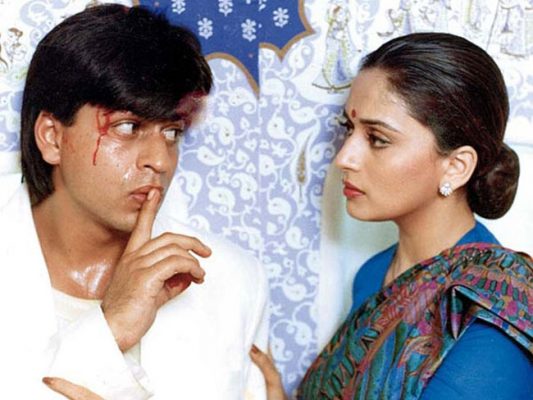
Phase 1995-1999: The Banjo-Playing Hero Flaying His Arms Around
1995 was an important year for SRK. Not only did he play the reincarnated son of Durga Singh (played by Rakhi), he also played brother to Salman Khan on screen for the first time – paving way for numerous sibling-like bonhomie in the future.
It was also the year SRK played Raj Malhotra, the banjo-playing, fiddling-with-a-stranger’s-bra-on-the-train kinda boy who fails year after year, ruins many lives, and yet runs off with the girl of his dream because, “Jaa, Simran, jaa. Jee le apni zindagi…”
His role in Dilwale Dulhania Le Jayenge was also just the first of many Raj Malhotra-like roles SRK ended up playing later on in his career. And the many dialogues that ended up being popular catchphrases, one of which even former US President Obama quoted like a pro.
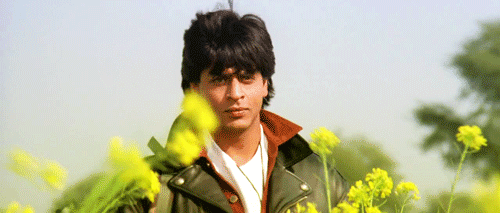
Post-DDLJ, there were a few hits and misses for SRK. Hits included Koyla, Yes Boss (a mature version of Raju Ban Gaya Gentleman), Pardes, Dil Toh Pagal Hai, Duplicate, Mani Ratnam’s Dil Se, and Kuch Kuch Hota Hai.
Misses, however, were fewer – Ram Jaane, Trimurti, Chaahat, and many others with cameo appearances.
Trivia about this phase: SRK played ‘Rahul’ four times and ‘Raj’ twice.
Phase 2000-2010: The Good, The Bad, The Drunk, And The Family Man
Clearly the first 10 years of the 2000s had SRK experimenting with a variety of roles that pretty much established his indomitable stardom. The early 2000s also saw the actor embracing his trademark cinematic persona.
Initially, he went the patriotic route with Phir Bhi Dil Hai Hindustani and Kamal Haasan’s directorial Hey Ram.
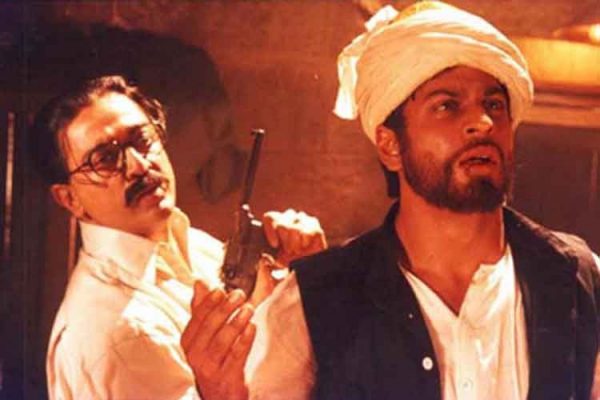
There was hamming too, especially when SRK tried going negative with Josh, a Bollywood version of the West Side Story. Unlike Baazigar and Darr, SRK couldn’t get his bad-boy swagger back with this one.
He made it up with Asoka though — a character with many shades of grey.
Then came Kabhi Khushi Kabhie Gham. Rahul Raichand, the rule-breaking adopted son of Yash Raichand and family, directed by Karan Johar. Not only did it become a cult classic, much like his DDLJ, Kuch Kuch Hota Hai, and Dil Toh Pagal Hai, this one had catchphrases and some of the funniest scenes remade in several other films later on.
Right now, they make terrific memes.
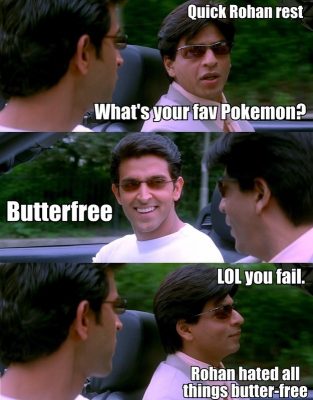
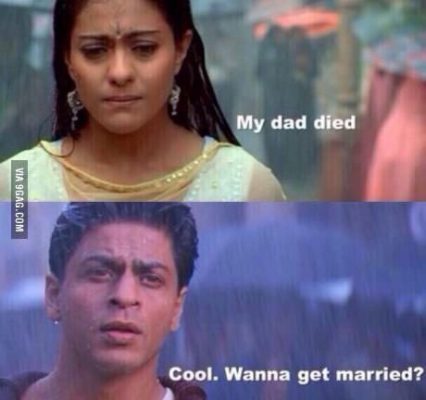
SRK signed for Johar’s two other films with K — one where he died of a weak heart, the other where he committed adultery and still got away with it. Kal Ho Na Ho had him play Aman, a man who stayed with his mother and imparted unsolicited life advice, especially considering no one took a keen interest in finding out what his day job was.
Aman was romantic, too. He devised a foolproof plan titled ‘6 din ladki in’ (Six days and the girl is yours). It worked towards his favour because Naina (Preity Zinta) fell harder for him while also accepting Rohit’s (Saif Ali Khan) proposal. Talk about the combination of unrequited love and a weak heart.
In Kabhi Alvida Naa Kehna, he played ‘Worst Husband Of The Year’. A darker and meaner version of Aman, perhaps. Stuck in a loveless marriage with Naina… err Rhea (also played by Preity Zinta) only to cheat on her and then get away with it by spouting how love should be the only foundation of marriage but it shouldn’t be at the expense of hurting others.
SRK also veered away from his regular chocolate boy fare to something more mature, treading towards darker territory.
The two films also had him arms open wide, as usual.
After almost giving in to the dark side, SRK reprised the chocolate boy roles again, this time with a combination of ugly duckling turned cheesy swan. In Rab Ne Bana Di Jodi, he played the meek husband of Anushka Sharma, a heroine almost half his age, and wooed her as the hyper dance partner who finally turns out to be her husband. Surprise!
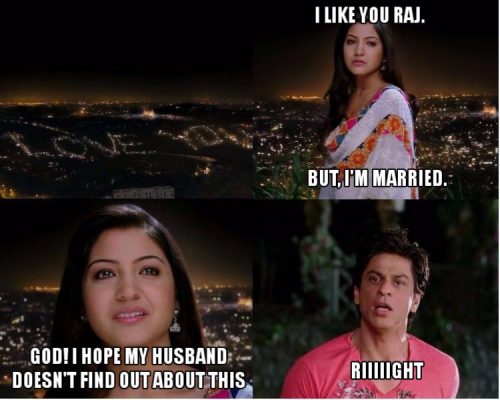
And soon enough, My Name Is Khan happened. A rather subdued SRK played a character he had probably never attempted before. It broke stereotypes. It showed sincerity. It was also the advent of an SRK who knew what films would work and why emotional ones were the way to go.
Phase 2011-2017: Old And Wise
The romantic chocolate boy switched roles with a more matured person 2011 onwards. Yash Chopra’s last film Jab Tak Hai Jaan had SRK play an army man strict about his profession, yet dedicated and almost lost without his love. It’s as though Raj from DDLJ matured started to take life seriously instead of joking around, learnt how to diffuse bombs, and take his lady love seriously. He also had a beard on and played someone close to his age. Samar Anand-like characters are clearly a rarity in Bollywood.
Recommended
There was Chennai Express too, a love story of a North Indian man and a South Indian girl. But let’s be real, it was more about that dreadful ‘lungi dance‘ we still make Hollywood celebs do at award shows.
Dilwale, supposedly a romantic drama with some action, brought Kajol and SRK together. But that was about it.
With Jab Harry Met Sejal, there is a feel of Chennai Express, Kal Ho Na Ho, and Rab Ne Bana Di Jodi. There’s the standard flaying of arms around and staring intently at the heroine when she’s asleep or out of focus. Hard to say if it SRK in a completely new avatar or him doing what he knows the best — romantic heroes seeking validation from the girl.
